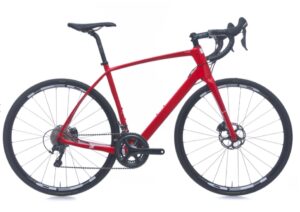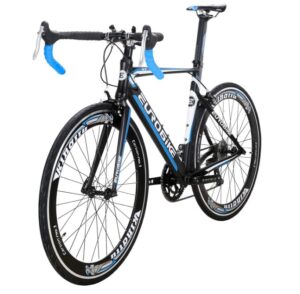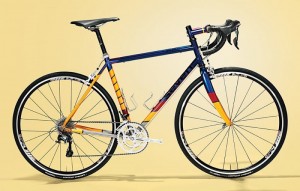Gravel bikes and road bikes: What’s the difference?
 Gravel bikes and road bikes are quite similar in many ways. So, both include highway handlebars, rigid frames, and narrow tires, but what are the distinctions? Let’s look at some of them.
Gravel bikes and road bikes are quite similar in many ways. So, both include highway handlebars, rigid frames, and narrow tires, but what are the distinctions? Let’s look at some of them.
Highway bicycles are designed for asphalt, whereas gravel bicycles can also be used on trails. While these two types of bicycles have a lot in common, there are several significant differences that make them better suited for different pavements and riding styles.
What’s the difference?
Road bikes, of course, are as unique as possible from gravel bicycles for serious off-road riding, whereas, for example, long-distance road bikes and more versatile gravel vehicles have a lot more in common.We’ll look at how these bikes compare overall in this post. Maybe you’ve finally figured out what sort of bike you want and how flexible a decent gravel bike might be. After all, it’s ideal for commuting, touring, and winter cyclists who continue to train.
What are road bikes for, and what are gravel bikes for?
Both are typically divided into several different subtypes that are mostly differentiated by their purpose: either for the highway or off-road.
Read also:
Types Road Bikes and How To Choose The Best One
The Best Gravel Bikes Under $1000 [Reviews And Advanced Buyer’s Guide]
Best Bicycle For Women – Reviews And Buyer’s Guide
Top 10 Best Mens Road Bike Under $3,500: Reviews And Ultimate Buyer’s Guide
Based on what they’re meant for, gravel bikes will have key features such as cockpit set-up, frame material, geometry and tire clearances that a road bike wouldn’t necessarily need (and vice versa). Even so, there are some fundamental differences between road and gravel bikes.
Geometry
 Longer, lower, and more angled are all common phrases. These are words that are already associated with mountain bikes, however they may be used effectively to compare road bike and gravel bike geometry. A good handling is important for a road bike; above all else, it should be quick and agile. A gravel bike should be sturdy off-road and provide rider comforts during lengthy journeys.
Longer, lower, and more angled are all common phrases. These are words that are already associated with mountain bikes, however they may be used effectively to compare road bike and gravel bike geometry. A good handling is important for a road bike; above all else, it should be quick and agile. A gravel bike should be sturdy off-road and provide rider comforts during lengthy journeys.
The geometry of these bikes is unique owing to their various characteristics. The Grevels, for example, have a longer wheelbase and a steeper handlebar angle for greater stability. These variances are comparable to those between cross-country and trail bicycles in the world of mountain biking.
The design of gravel bikes–which are meant for a straighter, more relaxed posture– involves taller and shorter frames than most road bikes (with the exception of racing models). However, long-distance road racers don’t ride as aggressively as other cyclists, so in that sense they aren’t too different from riders who use gravel bikes.On certain gravel-bikes, the upper tube is beveled, allowing you to use longer seatposts for more vibration dampening as well as greater rider mobility than traditional frames, where the top tube is parallel to the ground.
Tires and their clearances
Tires (and, by extension, so-called “mud clearances for tires”) are one of the most significant distinctions between road and gravel bicycles. The width of a tire on a gravel bike is never less than 35mm, and in some cases it may be up to 2 inches (50mm) or more.
The maximum width for a bike tire is largely dependent on the frame and fork clearance. For gravel bikes, these gaps are significantly bigger to allow not only wider tires but also enough space for mud buildup when riding in wet conditions.
Of course, there is still a limit to how wide these clearances can be. As a result, some people (and brands) opted for 650B standard wheels because it lets them put thicker tires without needing to change the frame or fork.
Almost all roadsters have 700c wheels, whereas the option of 650B (or 650c) is occasionally chosen on very small bikes to maintain the conventional geometry. Almost everything is debatable here – the choice of tires depends on weather conditions and other factors. As a result, you frequently use semi-slicks on gravel bicycles for fast races on dry ground, while wet and mucky tracks are covered with more “furious” rubber.
Frame Material

Road and gravel bicycles are composed of different materials. Aluminum, steel, carbon, and titanium are among them. Each material has advantages and disadvantages, which might be related to price, dependability, weight, or vibration dampening capacity. Different grades of the same metals exist as well.
Steel, on the other hand, is less popular among gravel bike builders since it is more durable, dependable, and able to dampen vibrations. Steel has also become increasingly popular because of its simplicity of construction; custom frames are in vogue among gravel-bike enthusiasts, which has increased steel popularity even further. Carbon remains the most common material for both kinds (particularly for not excessively expensive versions).
Budget bikes frequently use aluminum frames, which are very sturdy and inexpensive, making them ideal for novice riders. Titanium frames, on the other hand, are popular among many people but are not cheap. It is thought that titanium frame bicycles are more comfortable than steel ones. They have superior fatigue resistance properties.
Luggage and accessory mounts
Except for two bottle holders inside the front triangle, it’s unusual to find any frame mounts on racing roadsters. That said, you’ll frequently encounter fender, carrier, and additional flask mountings on traveling, city, and winter road racers. In fact, in the case of gravel bikes, it’s a similar story. There are few frame mounts on racing bikes except for two flasks; nevertheless, on long journeys bicycles can be quite covered with various fasteners (bonnets) – they can be seen on the upper and lower frame tubes as well as the fork legs.
Cockpit
 Although road bikes and gravel bikes may look similar at a first glance, upon closer inspection there are some obvious differences. One such difference is in the cockpit – that is, the seatposts, handlebars and stem. Racing roadsters are designed for speed – they have racing transmissions and aerodynamic frames. Therefore on such bikes you might often see features like aerodynamic handlebars and seatposts.
Although road bikes and gravel bikes may look similar at a first glance, upon closer inspection there are some obvious differences. One such difference is in the cockpit – that is, the seatposts, handlebars and stem. Racing roadsters are designed for speed – they have racing transmissions and aerodynamic frames. Therefore on such bikes you might often see features like aerodynamic handlebars and seatposts.
Although aerodynamic cockpit elements may be found on touring bikes, you’ll more often encounter components that improve the bike’s stability off-road. The extended handlebars at the bottom, for example, provide greater leverage and a more comfortable hand position while descending, so they’ve become quite popular on bikes of this sort. Straight handlebars can also be found on some gravel bikes.
Meanwhile, some gravel bikes come with seatposts that mitigate vibrations better when you’re riding off-road. Additionally, you may find more sophisticated tech on these bikes, like shock-absorbent and adjustable seatposts or even padded stems and handlebars. These components can be built into the frame or added to the bike aftermarket.Suspension
 Gravel-bike riders are increasingly adopting suspension systems. These can be integrated into the frame, like on BMC’s new URS LT bike with a negligible few millimeters of travel. Or they can separate components, such as RockShox’s Rudy Ultimate XPLR shock absorbing fork, which has 40mm of travel.
Gravel-bike riders are increasingly adopting suspension systems. These can be integrated into the frame, like on BMC’s new URS LT bike with a negligible few millimeters of travel. Or they can separate components, such as RockShox’s Rudy Ultimate XPLR shock absorbing fork, which has 40mm of travel.
In fact, the first equitable suspension showed up not on gravel bikes but regular road bikes. For example, during races like Paris-Roubaix or Tour of Flanders, athletes would appear with a micro-suspension of sorts on their bicycles which let them go faster and more comfortably on broken roads.
If the only perk you see in suspending gravel bikes is increased comfort over long rides, then you should take a look into modern day road trip bikes where you can also find micro-suspensions.
Conclusion
This year saw significant innovations in road bike design, with gravel models playing an especially important role. Engineers have reluctantly admitted that they have reached the limit of their capabilities when it comes to creating aerodynamically perfect designs while still complying withbike design regulations. Having peaked in 2019-2020 in terms of aerodynamics, developers are now focusing on other aspects of making the bike better: comfort and running characteristics that provide not only speed but also comfort and versatility.
Many of the techniques and solutions developed on gravel bikes have been applied to road bikes, blurring the distinction between gravel and highway. Modern enduro bikes began to resemble gravel bicycles in terms of performance, with particular emphasis on harsh off-road riding, but without requiring significant off-road experience.